Rising Vehicle Production
The Automotive Halogen Headlights Market is experiencing growth due to the increasing production of vehicles worldwide. As manufacturers ramp up production to meet consumer demand, the need for reliable and cost-effective lighting solutions becomes paramount. In 2025, the automotive sector is projected to produce over 90 million vehicles, which directly correlates with the demand for halogen headlights. These headlights are favored for their affordability and ease of installation, making them a preferred choice for many manufacturers. Furthermore, the expansion of automotive production facilities in emerging markets is likely to bolster the market, as these regions often favor halogen technology due to its lower initial costs compared to alternatives. This trend suggests a sustained demand for halogen headlights in the automotive sector.
Cost-Effectiveness of Halogen Headlights
The cost-effectiveness of halogen headlights significantly influences the Automotive Halogen Headlights Market. As vehicle manufacturers seek to balance quality and affordability, halogen headlights present an attractive option. The average cost of halogen headlights is considerably lower than that of LED or xenon alternatives, making them a preferred choice for budget-conscious consumers and manufacturers alike. In 2025, the price of halogen headlights is expected to remain stable, further solidifying their position in the market. This affordability does not compromise performance, as halogen lights provide adequate illumination for most driving conditions. Consequently, the economic advantages associated with halogen technology are likely to drive continued demand in the automotive lighting sector.
Consumer Preference for Halogen Technology
Consumer preferences play a crucial role in shaping the Automotive Halogen Headlights Market. Many vehicle owners continue to favor halogen headlights due to their proven performance and cost-effectiveness. Despite the emergence of LED and xenon technologies, halogen lights remain popular for their simplicity and lower replacement costs. In 2025, it is estimated that halogen headlights will account for approximately 60% of the automotive lighting market, indicating a strong consumer inclination towards this technology. Additionally, the familiarity of halogen lights among consumers contributes to their sustained popularity, as many drivers are accustomed to their performance characteristics. This consumer loyalty is likely to support the ongoing demand for halogen headlights in the automotive sector.
Regulatory Compliance and Safety Standards
Regulatory compliance and safety standards are pivotal in the Automotive Halogen Headlights Market. Governments worldwide are increasingly implementing stringent regulations regarding vehicle lighting to enhance road safety. Halogen headlights, known for their reliability and performance, are often compliant with these regulations, making them a viable option for manufacturers. In 2025, it is anticipated that new safety standards will further emphasize the importance of effective lighting solutions, thereby boosting the demand for halogen headlights. Manufacturers are likely to prioritize halogen technology to ensure compliance while maintaining cost-effectiveness. This regulatory landscape suggests that halogen headlights will continue to play a significant role in meeting safety requirements in the automotive sector.
Technological Innovations in Halogen Lighting
Technological innovations within the Automotive Halogen Headlights Market are contributing to the evolution of halogen lighting solutions. Recent advancements have led to the development of high-performance halogen bulbs that offer improved brightness and longevity. These innovations are appealing to both manufacturers and consumers, as they enhance the overall driving experience without significantly increasing costs. In 2025, the introduction of new halogen technologies is expected to capture a larger market share, as they provide a compelling alternative to more expensive lighting options. The continuous improvement in halogen technology indicates a potential for sustained growth in the market, as consumers seek enhanced performance without compromising on affordability.


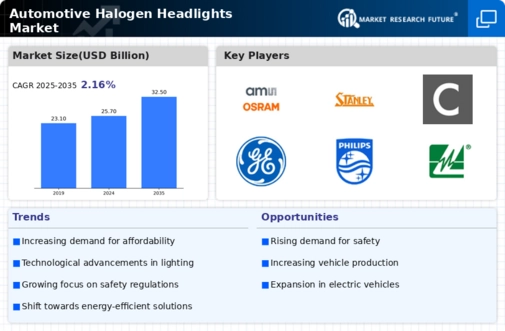

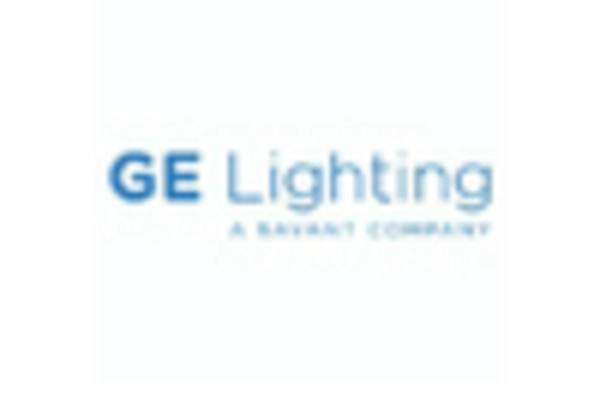
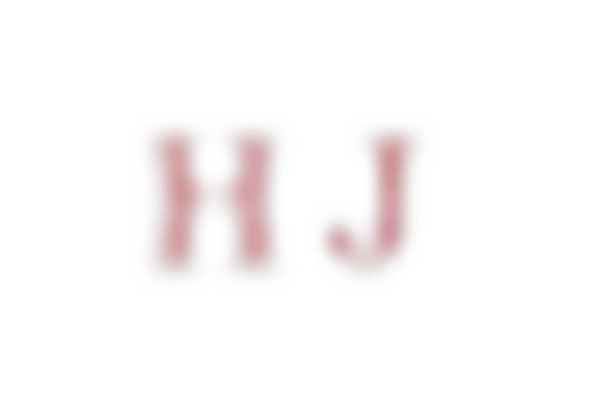
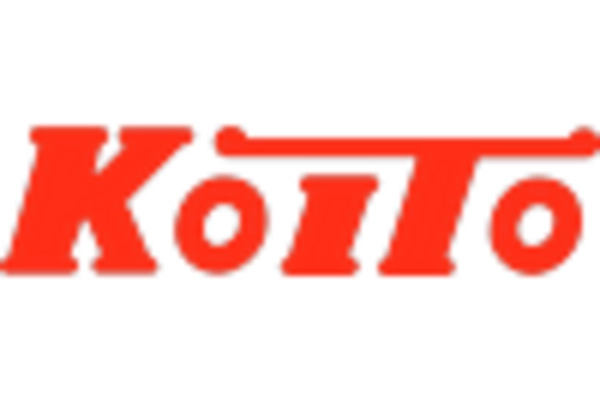


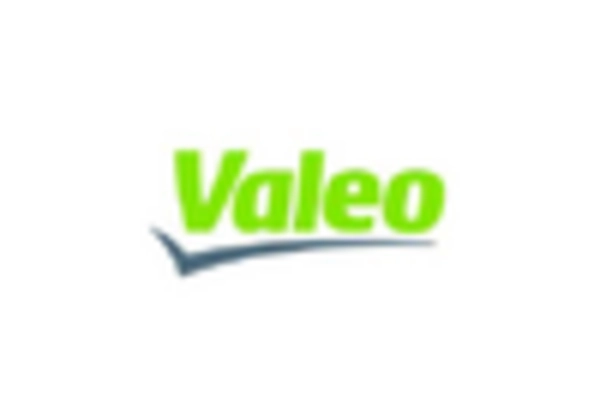








Leave a Comment